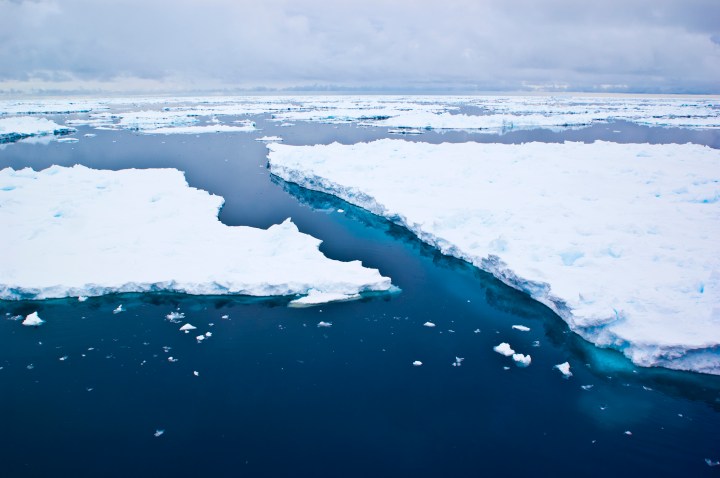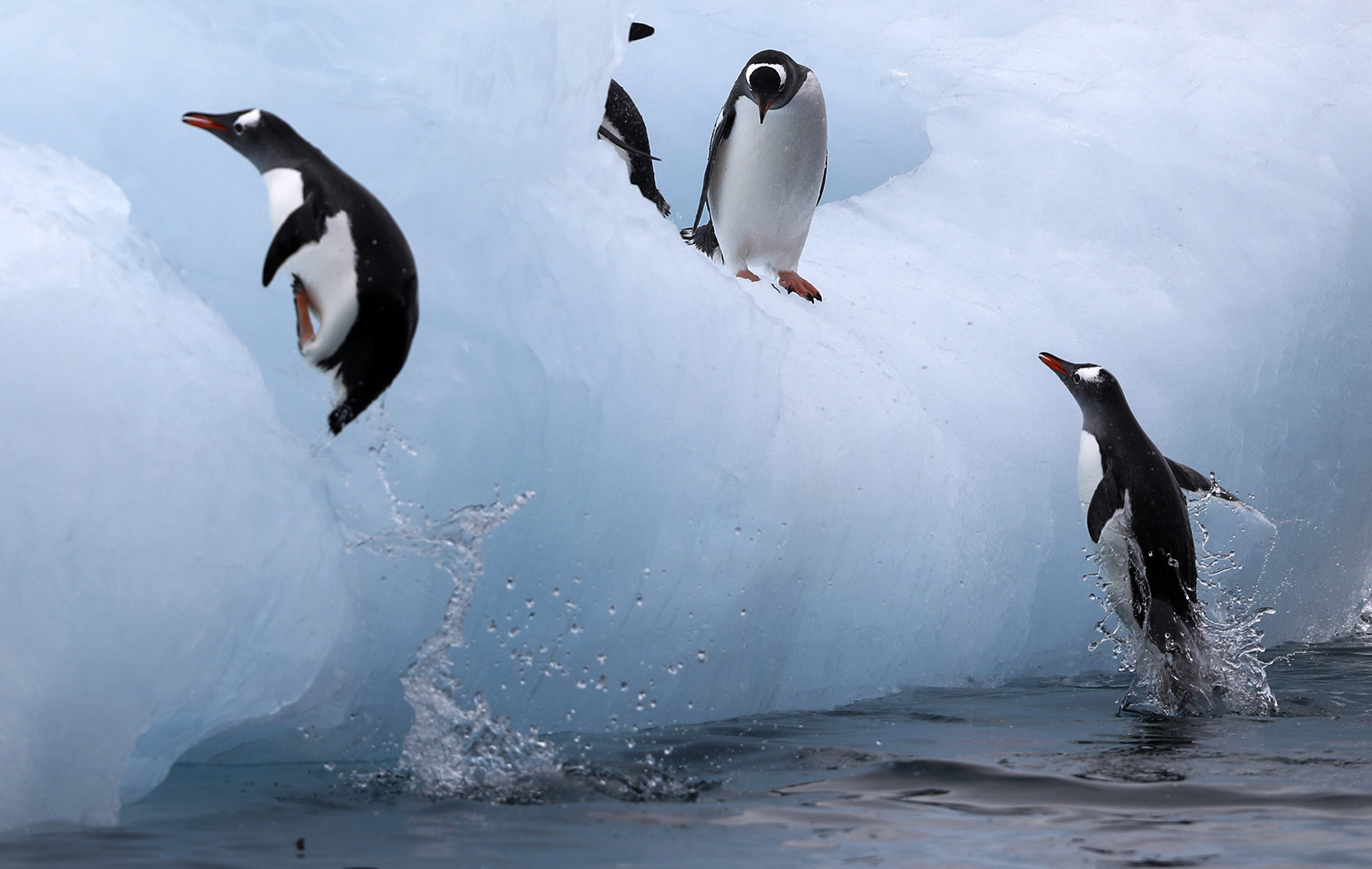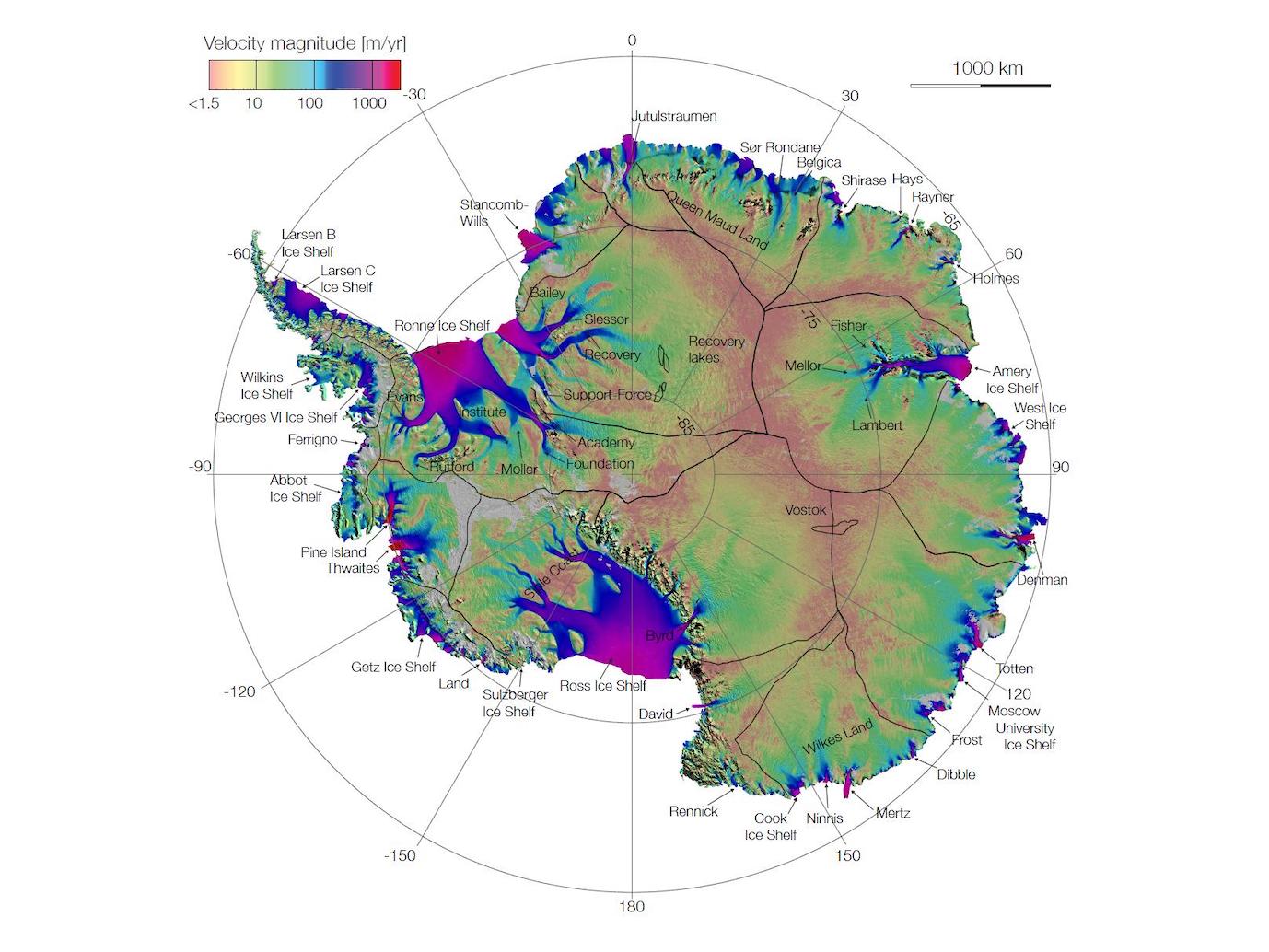THE CONVERSATION
Troubling new research shows warm waters rushing towards the world’s biggest ice sheet in Antarctica

Warmer waters are flowing towards the East Antarctic ice sheet, according to our alarming new research which reveals a potential new driver of global sea-level rise.
The research, published on 2 August 2022 in Nature Climate Change, shows changing water circulation in the Southern Ocean may be compromising the stability of the East Antarctic ice sheet. The ice sheet, about the size of the US, is the largest in the world.
The changes in water circulation are caused by shifts in wind patterns, and linked to factors including climate change. The resulting warmer waters and sea-level rise may damage marine life and threaten human coastal settlements.
Our findings underscore the urgency of limiting global warming to below 1.5℃, to avert the most catastrophic climate harms.

Gentoo penguins frolic on an iceberg in Antarctica in March 2020. Warmer waters and sea-level rise may damage marine life and threaten human coastal settlements. (Photo: EPA-EFE / Felipe Trueba)
Ice sheets and climate change
Ice sheets comprise glacial ice that has accumulated from precipitation over land. Where the sheets extend from the land and float on the ocean, they are known as ice shelves.
It’s well known that the West Antarctic ice sheet is melting and contributing to sea-level rise. But until now, far less was known about its counterpart in the east.
Our research focused offshore on a region known as the Aurora Subglacial Basin in the Indian Ocean. This area of frozen sea ice forms part of the East Antarctic ice sheet.
How this basin will respond to climate change is one of the largest uncertainties in projections of sea-level rise this century. If the basin melted fully, global sea levels would rise by 5.1m.
Much of the basin is below sea level, making it particularly sensitive to ocean melting. That’s because deep seawater requires lower temperatures to freeze than shallower seawater.

A map of Antarctica seen from above, revealing the extent of the ice sheet. (Photo: Nasa’s Goddard Space Flight Center Scientific Visualization Studio)
What we found
We examined 90 years of oceanographic observations off the Aurora Subglacial Basin. We found unequivocal ocean warming at a rate of up to 2℃ to 3℃ since the earlier half of the 20th century. This equates to 0.1℃ to 0.4℃ per decade.
The warming trend has tripled since the 1990s, reaching a rate of 0.3℃ to 0.9℃ each decade.
So, how is this warming linked to climate change? The answer relates to a belt of strong westerly winds over the Southern Ocean. Since the 1960s, these winds have been moving south towards Antarctica during years when the Southern Annular Mode, a climate driver, is in a positive phase.
The phenomenon has been partly attributed to increasing greenhouse gases in the atmosphere. As a result, westerly winds are moving closer to Antarctica in summer, bringing warm water with them.
The East Antarctic ice sheet was once thought to be relatively stable and sheltered from warming oceans. That’s in part because it’s surrounded by very cold water known as “dense shelf water”.
Read more in Daily Maverick: “Massive Antarctica glaciers have melted the most in at least 5,500 years”
Part of our research focused on the Vanderford Glacier in East Antarctica. There, we observed the warm water replacing the colder dense shelf water.
The movement of warm waters towards East Antarctica is expected to worsen throughout the 21st century, further threatening the ice sheet’s stability.
Why this matters to marine life
Previous work on the effects of climate change in the East Antarctic has generally assumed that warming first occurs in the ocean’s surface layers. Our findings – that deeper water is warming first – suggests a need to rethink potential impacts on marine life.
Robust assessment work is required, including investment in monitoring and modelling that can link physical change to complex ecosystem responses. This should include the possible effects of very rapid change, known as tipping points, that may mean the ocean changes far more rapidly than marine life can adapt.
East Antarctic marine ecosystems are likely to be highly vulnerable to warming waters. Antarctic krill, for example, breed by sinking eggs to deep ocean depths. Warming of deeper waters may affect the development of eggs and larvae. This in turn would affect krill populations and dependent predators such as penguins, seals and whales.
Limiting global warming below 1.5℃
We hope our results will inspire global efforts to limit global warming below 1.5℃. To achieve this, global greenhouse gas emissions need to fall by about 43% by 2030 and to near zero by 2050.
Warming above 1.5℃. greatly increases the risk of destabilising the Antarctic ice sheet, leading to substantial sea-level rise.
But staying below 1.5℃ would keep sea-level rise to no more than an additional 0.5m by 2100. This would enable greater opportunities for people and ecosystems to adapt. DM/OBP
First published in The Conversation.
Laura Herraiz Borreguero is a physical oceanographer at Australia’s national science agency, CSIRO. Alberto Naveira Garabato is a professor at the National Oceanography Centre, University of Southampton. Jess Melbourne-Thomas is a transdisciplinary researcher and knowledge broker at the CSIRO.
Disclosure: Laura Herraiz Borreguero received funding from the European Research Council Horizon 2020 Marie Skłodowska-Curie Individual Fellowship, through grant number 661015, and the Centre for Southern Hemisphere Oceans Research (CSHOR, Hobart, Australia); She receives funding from the Australian government through CSIRO and the Australian Antarctic Partnership Program (AAPP). She is affiliated with CSIRO, the AAPP. Alberto Naveira Garabato received funding from the Royal Society through a Wolfson Research Merit Award. Jess Melbourne-Thomas receives funding from the Climate Systems Hub of the Australian Government’s National Environmental Science Program, the Fisheries Research and Development Corporation and The Pew Charitable Trusts.



















 Become an Insider
Become an Insider
Important science, not unexpectedly with very concerning findings! It really is time to stop all new fossil fuel projects, and accelerate phase-down of existing ones!!
Is it not so that ice floating in water has already displaced all the water it will release when melting? Thus not adding to further rise in sea levels. sea level. Secondly when the ice melts from contact by warm water, will it not lower the temperature of the surrounding water, thus slowing down the rate it which it melts?
Correct on both counts, except that it is the melting of the ice on the land that is of concern and that will raise the sea levels, and although the melting ice cools the rest of the water, it does not stop the melting, only briefly slows it down. The scientists are very aware of both these points as well as many others, like the effect of salt on the freezing and melting of sea ice, the thermal buffering of land ice by sea ice, and much more. Science isn’t perfect, but I can assure you that none of their predictions are based on limited knowledge or ignorance of every available detail that the rest of us can think of.
As may be expected things are more complex than that. Yes, 90% of the floating ice is already below sea level and hence cannot raise sea levels when it melts – as for the Arctic ice cap. Other factors at play are – sea temperature and atmosphere rises – small but real; reduction in salinity with time but probably most significantly rising sea levels. Melting of the onshore ice cap in Greenland has probably contributed most to that – ca. 20cm in the last ca. 140 years and climbing – also rising temperatures contributes to small expansion of water volume. Recent research has demonstrated that ice sheets are being eroded from underneath, by relatively warm water which originates in the tropics where its density increases due to evapouration and consequently sinks and drifts south. In many area’s ice sheets at sea are partially grounded and hence stabilised. With rising sea levels, grounded ice sheets will increasingly begin to float, hence removing the stabilising buttresses. Removal of these will contribute to ice sheet disintegration. British Antarctic Survey along with the US program are currently monitoring the fragmentation of an area termed Thwaites Glacier (approximate area equivalent to the UK) which has started disintegrating significantly over the last ca. 5 years
I hate raining on such an obviously detailed study BUT. Firstly the Aurora ice shelf is in the Ross sea which is Western Antarctica. The area to the West of the Transantarctic Mountains is conveniently named West Antarctic and that East – well East Antarctic. The Ross Sea is in the Western half – fact. Secondly the WHOLE of Antarctica is roughly 1.5 times the size of the USA and the Aurora Ice shelf is probably about the size of maybe Maine but definitely NOT the USA! These fundamental errors of definition tend to throw a huge question mark over the rest of the analysis. To raise the water level of the world’s oceans by 5,1 m would mean adding some 850,000 cubic kilometres of water and the Ross Sea ice shelf (of which the Aurora ice shelf is only a part maybe 30%) total ice is less than 500,000 cubic kilometres, so even if the entire Ross ice shelf (about the size of Yukon in Canada) melted, it would cause maybe a 3m rise, except as pointed out by Eric earlier, the only increase in water level would be the ice above sea level so that would be maybe maximum of 100,000 cubic kilometres or 80cm rise in the oceans. In summary the above report is pretty much highly suspect given all the blatant errors contained in it.